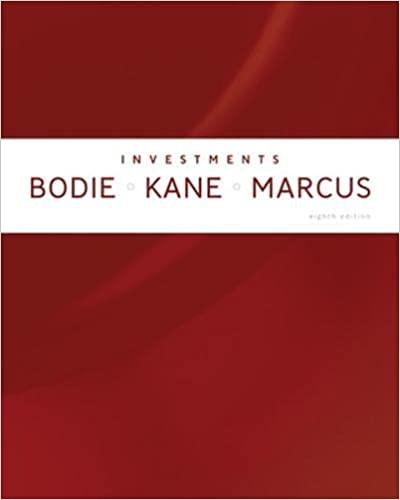Question
As a senior partner at one of the nations largest public accounting firms, you serve as chair- person of the firms financial reporting policy committee.
As a senior partner at one of the nations largest public accounting firms, you serve as chair- person of the firms financial reporting policy committee. You are also the firms chief spokesperson on financial reporting matters that come before the FASB and the Securities and Exchange Commission. The year is 2017.
Two new debt securities have caught the attention of your committee, the FASB, the SEC, Congress, and the Treasury Department. Draper, Inc. recently completed a $200 million offer- ing of so-called century bonds that mature in 2117, or in 100 years. Castle Company announced that it will issue $250 million of millennium bonds that mature in 3017, or in 1,000 years. Neither company is a client of your firm. The treasury department and Congress have proposed limiting interest deductions for long-term bonds to 40 years. They argue that 100-year debt should be treated the same as equity because the bonds are more like permanent capital. Their reasoning is that given that stock dividend payments cannot be deducted from taxable income, interest payments on the last 60 years of 100-year debt should not be deducted.
Required:
1. Suppose that Draper, Inc., issued its $200 million century bonds on January 1, 2017, at a market yield of 7.5%, the same as the stated interest rate. To keep things easy, also assume that the bonds pay interest just once a year, on December 31. Compute the bonds issue price. How much of that price comes from the present value of the interest pay- ments, and how much comes from the promised principal payment?
2. In present value terms, how much of a tax savings does the company obtain from its cen- tury bond? (Use a 35% effective tax rate.) How much of a tax savings would be lost if only the first 40 years of interest deductions were allowed?
3. Suppose that the Draper century bonds were issued with a stated rate of 7.5% when the market yield rate was 8.5%. What would the issue price be? How about if the market yield were 6.5%?
4. In October 2011, The Ohio State University sold $500 million worth of 100-year bonds, becoming the first public university to issue a so-called century bond. The bonds were priced to yield 4.849% which was 1.70 percentage points over 30-year Treasury rates. Ohio State was established in 1870, has 64,077 enrolled students, and a campus of more than 1,700 acres with 457 buildings. Two private universities, Massachusetts Institute of Technology (MIT) and the University of Southern California, had issued century bonds earlier that year. Typically, universities such as Ohio State issue 30-year tax-free bonds with fixed or floating interest rates. Public and private universities are tax-exempt institu- tions but the income from century bonds is taxable to the buyer. What are the likely eco- nomic advantages to Ohio State of issuing century bonds?
5. Why would the Treasury department and members of Congress be opposed to unlimited interest deductions on century and millennium bonds?
6. According to U.S. GAAP, are these securities debt or equity?
Step by Step Solution
There are 3 Steps involved in it
Step: 1

Get Instant Access to Expert-Tailored Solutions
See step-by-step solutions with expert insights and AI powered tools for academic success
Step: 2

Step: 3

Ace Your Homework with AI
Get the answers you need in no time with our AI-driven, step-by-step assistance
Get Started


